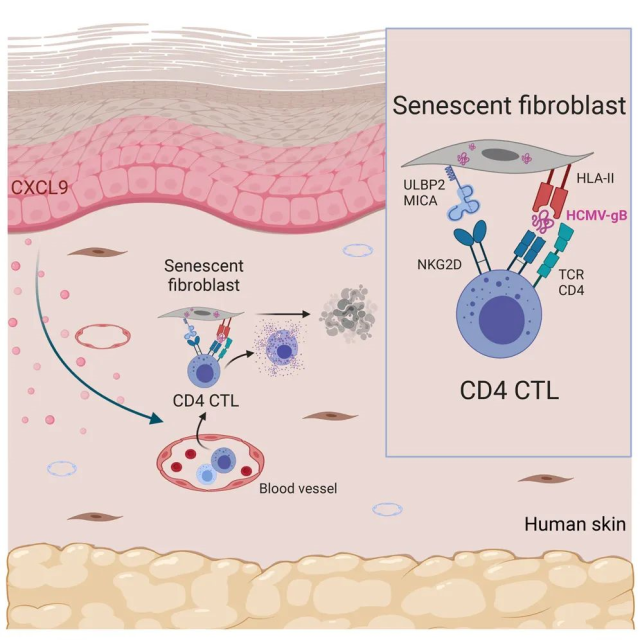Harvard: A new mechanism to remove aging cells
- WHO Releases Global Influenza Vaccine Market Study in 2024
- HIV Infections Linked to Unlicensed Spa’s Vampire Facial Treatments
- A Single US$2.15-Million Injection to Block 90% of Cancer Cell Formation
- WIV: Prevention of New Disease X and Investigation of the Origin of COVID-19
- Why Botulinum Toxin Reigns as One of the Deadliest Poisons?
- FDA Approves Pfizer’s One-Time Gene Therapy for Hemophilia B: $3.5 Million per Dose
Harvard: A new mechanism to remove aging cells
- Red Yeast Rice Scare Grips Japan: Over 114 Hospitalized and 5 Deaths
- Long COVID Brain Fog: Blood-Brain Barrier Damage and Persistent Inflammation
- FDA has mandated a top-level black box warning for all marketed CAR-T therapies
- Can people with high blood pressure eat peanuts?
- What is the difference between dopamine and dobutamine?
- How long can the patient live after heart stent surgery?
Harvard: A new mechanism to remove aging cells.
Cell: Harvard University discovers a new mechanism for the body to remove aging cells, which can make the skin younger
Aging has long been considered inevitable, but with advances in anti-aging research, treatments to prevent aging are increasingly considered feasible. In anti-aging research, ” senescent cells ” are undoubtedly the most eye-catching. Senescent cells stop dividing, but instead of dying, they lie in a growth-arrested dormant state.
What’s more deadly is that these senescent cells persist and accumulate in the body, constantly secreting many pro-inflammatory and tissue-remodeling molecules, poisoning other surrounding cells, and leading to aging-related diseases such as cancer and degenerative diseases.
Previous studies in mice have demonstrated that clearing senescent cells from aging tissue restores the balance of arrest and thus prolongs healthy lifespan. So, is the same true in humans? If so, how can we stop the accumulation of senescent cells in aging organs?
On March 30, 2023, researchers from Massachusetts General Hospital of Harvard Medical School published in the journal Cell entitled: Cytotoxic CD4+ T cells eliminate senescent cells by targeting cytomegalovirus antigen (cytotoxic CD4+ T cells by targeting cytomegalovirus antigen clear senescent cells) research papers [1] .
This study demonstrates that a virus that is very common in humans, human cytomegalovirus (HCMV), reactivates in skin senescent cells, and that cytotoxic CD4+ T cells (CD4 CTL) recognize human cytomegalovirus glycoprotein B (HCMV-gB) directly clears senescent cells.
This suggests that boosting this antiviral immune response can eliminate senescent cells, develop treatments for younger-looking skin, and eliminate senescent cells in cancer , fibrotic diseases , and degenerative diseases .
Specifically, there was an increase in senescent cells in aged skin compared to young skin.
In aged skin, however, senescent cells did not increase further with age. Increased recruitment of CXCL9 (which mediates T cell recruitment) and cytotoxic CD4+ T cells (CD4 CTLs) was significantly associated with a reduction in senescent cells in aged skin.
Human leukocyte antigen class II (HLA-II) and human cytomegalovirus glycoprotein B (HCMV-gB) expressed by senescent cells in the skin become direct targets of cytotoxic CD4+ T cells (CD4 CTL) , which HLA-II-dependent clearance of HCMV-gB-positive senescent cells.

In December 2022, researchers from the anti-aging research company Altos Labs, together with an international research team from Spain, China, Japan, the United States and Luxembourg , published a paper in the journal Nature entitled: Senescence atlas reveals an aged-like inflamed niche that blunts muscle regeneration Research paper [2] .
The study presents a method for isolating senescent cells from mice and demonstrates that these senescent cells cause inflammation and prevent skeletal muscle regeneration even in young mice.
The study adds to the idea that removing senescent cells can help fight aging.

In the latest paper, published in Cell , the research team analyzed skin samples from older and younger adults to learn more about the clearance of senescent cells in human tissue.
The research team found that there were more senescent cells in older skin samples than in younger skin samples.
However, in samples from older individuals, the number of senescent cells did not increase further as individuals got older, suggesting that some type of mechanism begins to suppress senescent cells.
The research team found that once a person gets old, CD4+ T cells prevent the increase of senescent cells. The higher the number of CD4+ T cells in the tissue samples, the lower the number of senescent cells in the aged skin.
So, how do CD4+ T cells suppress senescent cells?
Human cytomegalovirus (HCMV) is a ubiquitous herpes virus that infects 86%-96% of the general population. And, once infected, they establish a lifelong latency, often without symptoms.
Further studies have shown that human cytomegalovirus (HCMV) reactivates from a latent state in senescent skin cells expressing human leukocyte antigen class II (HLA-II) and human cytomegalovirus glycoprotein B (HCMV- gB),
Expresses a protein produced by human cytomegalovirus (HCMV) , human cytomegalovirus glycoprotein B (HCMV-gB) , which becomes a direct target of cytotoxic CD4+ T cells (CD4 CTL) , which are expressed as HLA -II-dependent clearance of HCMV-gB-positive senescent cells.

Shawn Demehri , an associate professor of dermatology at Harvard Medical School and the corresponding author of the paper , said that this research shows that the viruses that live in our bodies may have beneficial functions and have clinical applications.
Immune responses to human cytomegalovirus (HCMV), to which most of us are already infected, help maintain homeostasis in aging organs, and infected senescent cells upregulate expression of HCMV antigens.
This suggests that the elimination of senescent cells by boosting the antiviral immune response could lead to the development of younger-looking treatments that advance cosmetic dermatology.
He also said the research team will further explore using the immune response to cytomegalovirus as a therapeutic approach to eliminate senescent cells in diseases such as cancer, fibrotic disease and degenerative diseases.
Paper link :
https://doi.org/10.1016/j.cell.2023.02.033
https://www.nature.com/articles/s41586-022-05535-x
Harvard: A new mechanism to remove aging cells
(source:internet, reference only)
Disclaimer of medicaltrend.org
Important Note: The information provided is for informational purposes only and should not be considered as medical advice.



